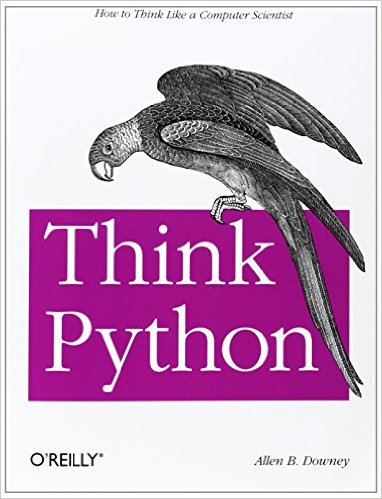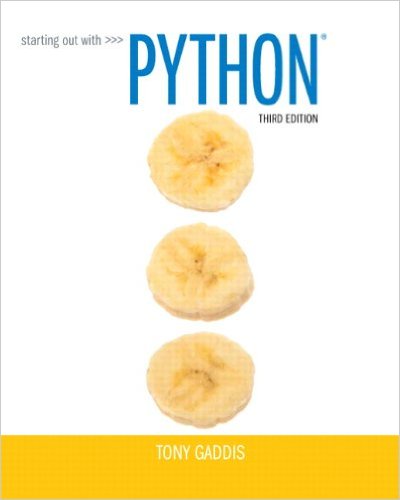Before getting started, lets get familiarized with the language first.
Python is a general-purpose language. It has wide range of applications from Web development (like: Django and Bottle), scientific and mathematical computing (Orange, SymPy, NumPy) to desktop graphical user Interfaces (Pygame, Panda3D).
The syntax of the language is clean and length of the code is relatively short. It's fun to work in Python because it allows you to think about the problem rather than focusing on the syntax.
More information on Python Language:
Python is a general-purpose language. It has wide range of applications from Web development (like: Django and Bottle), scientific and mathematical computing (Orange, SymPy, NumPy) to desktop graphical user Interfaces (Pygame, Panda3D).
The syntax of the language is clean and length of the code is relatively short. It's fun to work in Python because it allows you to think about the problem rather than focusing on the syntax.
More information on Python Language:
History of Python
Features of Python Programming
Applications of Python
4 Reasons to Choose Python as First Language

- Simple Elegant Syntax
Programming in Python is fun. It's easier to understand and write Python code. Why? The syntax feels natural. Take this source code for an example:a = 2 b = 3 sum = a + b print(sum)
Even if you have never programmed before, you can easily guess that this program adds two numbers and prints it. - Not overly strict
You don't need to define the type of a variable in Python. Also, it's not necessary to add semicolon at the end of the statement.
Python enforces you to follow good practices (like proper indentation). These small things can make learning much easier for beginners. - Expressiveness of the language
Python allows you to write programs having greater functionality with fewer lines of code. Here's a link to the source code of Tic-tac-toe game with a graphical interface and a smart computer opponent in less than 500 lines of code. This is just an example. You will be amazed how much you can do with Python once you learn the basics. - Great Community and Support
Python has a large supporting community. There are numerous active forums online which can be handy if you are stuck. Some of them are:
Run Python on Your Operating System

You will find the easiest way to run Python on your computer (Windows, Mac OS X or Linux) in this section.
Install and Run Python in Mac OS X
Install and Run Python in Linux (Ubuntu)
- Install the following dependencies:
$ sudo apt-get install build-essential checkinstall $ sudo apt-get install libreadline-gplv2-dev libncursesw5-dev libssl-dev libsqlite3-dev tk-dev libgdbm-dev libc6-dev libbz2-dev
- Go to Download Python page on the official site and click Download Python 3.6.0 (You may see different version name).
- In the terminal, go to the directory where the file is downloaded and run the command:
$ tar -xvf Python-3.6.0.tgz
This will extract your zipped file. Note: The filename will be different if you've downloaded a different version. Use the appropriate filename. - Go to the extracted directory.
$ cd Python-3.6.0
- Issue the following commands to compile Python source code on your Operating system.
$ ./configure $ make $ make install
- We recommend you to install Sublime Text if you are a newbie. To
install Sublime Text in Ubuntu (on 14.04). Issue following commands.
$ sudo add-apt-repository -y ppa:webupd8team/sublime-text-2 $ sudo apt-get update $ sudo apt-get install sublime-text
- Open Sublime text. To create a new file, go to File > New File (Shortcut: Ctrl+N).
- Save the file with .py file extension like: hello.py or first-program.py
- Write the code and save it (Ctrl+S or File > Save) . For starters, you can copy the code below:
print("Hello, World!")This simple program outputs "Hello, World!" - Go to Tool > Build (Shortcut: Ctrl+B). You will see the output at the bottom of Sublime Text. Congratulations, you've successfully run your first Python program.
Install and Run Python in Windows
- Go to Download Python page on the official site and click Download Python 3.6.0 (You may see different version name).
- When the download is completed, double-click the file and follow the instructions to install it.
When Python is installed, a program called IDLE is also installed along with it. It provides graphical user interface to work with Python. - Open IDLE, copy the following code below and press enter.
print("Hello, World!") - To create a file in IDLE, go to File > New Window (Shortcut: Ctrl+N).
- Write Python code (you can copy the code below for now) and save (Shortcut: Ctrl+S) with .py file extension like: hello.py or your-first-program.py
print("Hello, World!") - Go to Run > Run module (Shortcut: F5) and you can see the output. Congratulations, you've successfully run your first Python program.
Your First Python Program

Often, a program called "Hello,
World!" is used to introduce a new programming language to beginners. A
"Hello, World!" is a simple program that outputs "Hello, World!".
However, Python is one of the easiest language to learn, and creating "Hello, World!" program is as simple as writing
However, Python is one of the easiest language to learn, and creating "Hello, World!" program is as simple as writing
print("Hello, World!"). So, we are going to write a different program.Program to Add Two Numbers
How this program works?
Line 1: # Add two numbersAny line starting with
# in Python programming is a comment.Comments are used in programming to describe the purpose of the code. This helps you as well as other programmers to understand the intent of the code. Comments are completely ignored by compilers and interpreters.
Line 2: num1 = 3
Here, num1 is a variable. You can store a value in a variable. Here, 3 is stored in this variable.
Line 3: num2 = 5
Similarly, 5 is stored in num2 variable.
Line 4: sum = num1+num2
The variables num1 and num2 are added using + operator. The result of addition is then stored in another variable sum.
Line 5: print(sum)
The
print() function prints the output to the screen. In our case, it prints 8 on the screen.Few Important Things to Remember
To represent a statement in Python, newline (enter) is used. The use of semicolon at the end of the statement is optional (unlike languages like C/C++, JavaScript, PHP). In fact, it's recommended to omit semicolon at the end of the statement in Python.Instead of curly braces { }, indentations are used to represent a block.
im_a_parent:
im_a_child:
im_a_grand_child
im_another_child:
im_another_grand_child
Teach Yourself to Code in Python

Learn Python from Programiz
Programiz offers dozens of Python tutorials and examples to help you learn Python programming from scratch.Our tutorials are designed for beginners who do not have any prior knowledge of Python (or, any other programming languages). Each tutorial is written in depth with examples and detailed explanation.
We also encourage you to try our examples and run it. Once you understand the program, modify it and try to create something new. This is the best way to learn programming.
Recommended Books
If you are serious about learning programming, you should get yourself a good book.Granted, reading a programming book takes a lot of time and patience. But, you will get the big picture of programming concepts in the book which you may not find elsewhere.
Think Python: How to Think Like a Computer Scientist
If you have never programmed before, this book is for you. This book assumes that you have very little knowledge of programming and will provide everything you need to get started with Python.Don't skip the exercises provided in each chapter.
Starting out With Python
A well-written book with a lot of examples.This book is easy to understand even for complete beginners. Since, the content is well organized, it's a good book to have for future reference.
Effective Python: 59 Specific Ways to Write Better Python
Python is easy to get started with. However, there are many awesome features you may not be aware of, and hidden pitfalls you want to avoid."Effective Python" helps you to utilize the power of Python in the right way. Want to write robust, efficient and maintainable code in Python? You should definitely give this book a try.
Interactive Python Tutorial from DataCamp
Data Science is one field where Python has flourished rapidly in recent years. If you are looking to learn Python for data science, head over to Datacamp and try their free interactive tutorial.Final Words
Python is a terrific language. The syntax is simple and code length is short which makes is easy to understand and write.If you are getting started in programming, Python is an awesome choice. You will be amazed how much you can do in Python once you know the basics.
It's easy to overlook the fact that Python is a powerful language. Not only is it good for learning programming, it's also a good language to have in your arsenal. Change your idea into a prototype or create games or get started with data Science, Python can help you in everything to get started.



No comments:
Post a Comment